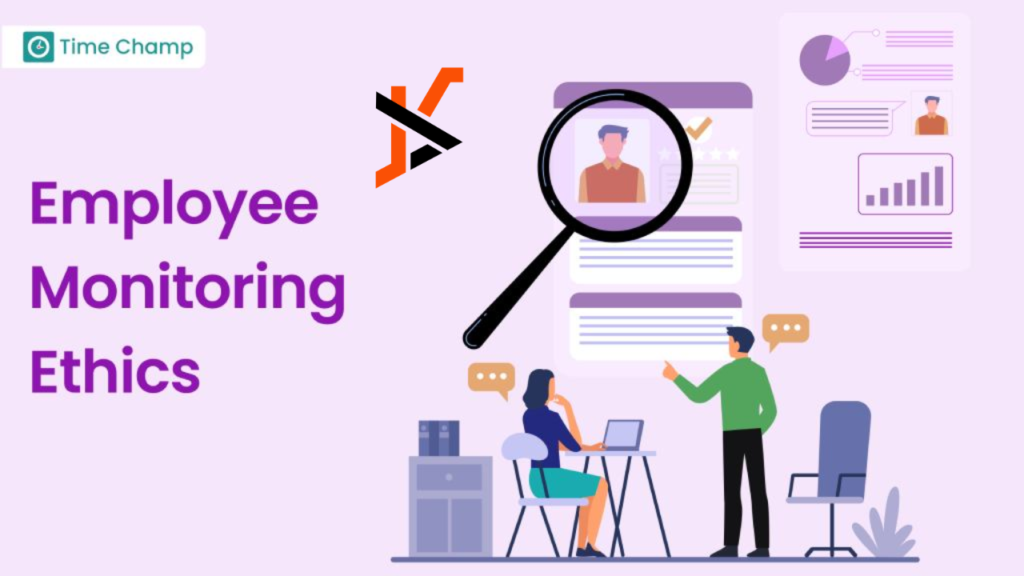Approximately 80% of business executives polled prior to the COVID-19 epidemic stated that gathering and utilizing workforce data propels company expansion. Additionally, according to one Accenture poll, 62% of businesses were using new technologies to gather employee data, such as attendance, productivity, and performance, but only 30% of executives were quite certain that the data was being used responsibly.
How companies are utilizing technology for employee monitoring
More workers say they feel at ease with monitoring technology as long as they understand its purpose and application. According to Gartner, employee comfort levels with email monitoring rose from 10% to 30% between 2015 and 2018.
Employers can keep an eye on workers in a variety of additional methods to assess output and performance, such as:
- Systems for tracking time and attendance, like clock-in/clock-out
- GPS monitoring of business vehicles and equipment
- To restrict and document access to particular regions or files, use security codes or cards.
- Making use of keylogging, screen recording, or application usage monitoring software
- Biometric sensors or security cameras
Following collection, this data can be examined to assist identify issues such as harassment, dangerous working conditions, and absenteeism. In addition to reducing theft and preventing data security breaches, it can identify bottlenecks so that work can be reassigned.
How workers feel about technology monitoring
Employee monitoring has a second aspect. As more workers were compelled to work from home due to the COVID-19 pandemic, thousands of companies started using monitoring software to log active work hours as well as to watch and observe employees during the workweek by “mandating always-on webcam rules,” multiple check-in times per day, and planned team social activities.
Being open and honest with your employees is crucial once you’ve considered the benefits and drawbacks of employee surveillance and have made the decision to use monitoring tools. Business leaders must explain the purpose of monitoring and how it supports your objectives because many employees find it uncomfortable to be watched.
According to a recent Harris Poll survey, employee attitudes toward monitoring are as follows:
- As long as the corporation is open about it, over three-quarters (77%) of Americans would feel at ease with their employer keeping an eye on their online activity.
- But 70% would think about quitting a company if they were being watched without their knowledge.
Concerns about data privacy and business ethics
Monitoring should be justified from a legal and moral perspective. In fact, the Electronic Communications Privacy Act of 1986 gives companies the authority to keep an eye on employee written and spoken communications as long as there is a valid business purpose that “definitively outweighs any potential harms to the privacy rights of employees.” Other privacy regulations, like the GDPR, stress that surveillance should be kept to a minimum in order to meet your company’s goals. As the privacy landscape continues to change and give people greater safeguards, US-based businesses should be ready to change their policies.
Maintaining employee trust is facilitated by transparency
Being extremely open and honest with your staff regarding your company-wide monitoring procedures may help you stay out of trouble with the law and improve employee satisfaction. Above all, employers must keep in mind that they are also in charge of securing and safeguarding all employee personal data, including browser history and other data gathered from surveillance as well as fundamental personal and job information. Here are a few best practices.
The following guidelines should be followed by companies when thinking about deploying surveillance or call center time tracking technology:
- Gather information that is insight-driven and data-driven. Keep an eye on data and use it sensibly. Avoid using employee monitoring software to gather a lot of information about a single employee in a broad manner. Instead, restrict the scope and subject of your surveillance to a certain place, application, or task, and use privacy-first features to promote anonymity.
- Discrimination must end. Employers should continually monitor their own systemse by using Controlio to make sure they are not disproportionately harming various groups, according to a recent Harvard Business Review (HBR) article. In monitoring, everyone should be watched keenly, and it should be ensured that no particular group is left out since they are the only ones being monitored; rather, everyone in the organization should be watched.
- Act like a human. Monitoring shouldn’t only be applied as a warning. It can also be used to reward workers when specific targets are met and to encourage them to be more productive. Furthermore, HBR notes that employers should approach monitoring with the understanding that even their best employees won’t always be performing at their highest level. If, following monitoring, the numbers don’t meet your expectations, consider unique situations and concentrate on innovative solutions.

